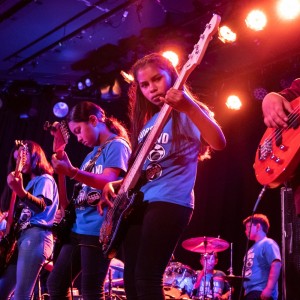Performance art can take many by surprise--and the departure of clothing can really catch some heat.
And yet, there is no irreverence here. Onstage nudity can, as Dance Magazine puts it, "showcase the body beautifully, revealing the mechanics of movement in a whole new way.."
Dance Mag writers Laura Cappelle and Zachary Whittenburg spoke to the echelon of top dancemakers about how and why they use the naked body as a canvas for their said art.
While the question made for some serious inquiry and deliberation, some finding it farfetched justification, others find it as a device worth using for their artistic expression.
Jonah Baker says, "In dance, there's default conservatism, particularly in forms whose origins are in court dancing and performing for royalty. It's a paradox because this art form is so physical, so dependent on the body. When I think about dance's development, in the 1960s in particular, about Anna Halprin, about works whose aims were to reclaim a feminine body, or a social body, I do think it has been a progressive project over time."
Marie Chouinard puts it, "No dancer of mine would have a question about performing nude. They are artists. Would you ask a singer, "Are you ready to reach a high note?" or ask an actress, "Are you able to cry?" It's simply part of the work."
Sidi Larbi Cherkaoui chimes in, "In this day and age, when the naked body is constantly used in a sexualized or violent way, contemporary art and dance are some of the few places where we can still encounter it in a different, more neutral form. Art is a form of education. It's through art that we learn what is beautiful, what is right and wrong. You don't have a lot of opportunities to compare yourself to other bodies, and you can recognize yourself and your scars in others. I admire people who use the naked body to make a statement about humanity."
Sidra Bell added, "I worked for a year on Beautiful Beast, which explored framing and contextualizing the female body in contemporary culture. I kept bringing in costume pieces for one of my dancers to try. One was a black men's jacket and nothing would work underneath it. She tried it by itself one day and her breasts were falling out of it and it was beautiful. It made sense for the character. Nudity was an extension of the content we were dealing with physically. To push against that would've been counterproductive."
Alexander Ekman claims, "I've only used nudity once, in Ekman's Triptych-A Study of Entertainment, for Cullberg Ballet. I wanted to create something like a painting or an old sculpture, so they needed to be naked. It's a sensitive issue, however, so when I asked them to do it, I actually took off all my clothes myself in the studio."
And Kathleen Jewett concludes, "The first time I was topless onstage, in a piece called Near the Terrace, I had about 10 relatives in the first couple of rows. My grandmother and great-aunts were there. It became a reality during tech rehearsal with crew members and the lighting designer: "Oh, wow. People are going to see my breasts." Seeing how comfortable and professional everyone else was helped...although I'd be lying if I said I wasn't self-conscious. I was concerned that my breasts weren't big enough, that my body wasn't perfect."
So while the reviews might be mixed and the performers pseudo-self-conscious about body image (currently at the forefront of the brigade for autonomy) the question of vulnerability in a nude setting can unravel some steadfast performers.
And yet, the artistic implications are endless and bring to light serious deliberation--and liberation--of the body in terms of sex and art.



